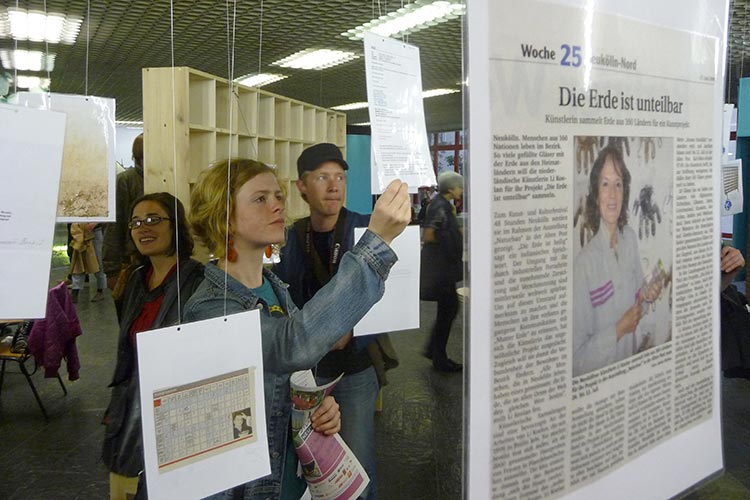DE
Die Alte Post in der Karl-Marx-Straße verwandelt sich bei 48 STUNDEN NEUKÖLLN erneut in einen Raum für Kunst. Im Obergeschoss sind Projekte von acht KünstlerInnen aus unterschiedlichen Ländern zu finden, die sich mit dem komplexen Verhältnis zwischen Natur und Stadt auseinandersetzen.
Sie wurden nach öffentlicher Ausschreibung von einer Jury ausgewählt. Voraussetzung war künstlerische Qualität, gepaart mit einem partizipatorischen Ansatz. So finden wir Projekte, die schon im Vorfeld die Mitwirkung von Kindern, Jugendlichen und Erwachsenen aus Berlin und aus den verschiedensten Ecken der Erde suchten, und Projekte, die in direkter Interaktion mit Aus- stellungsbesuchern entstehen.
Was bedeutet der Begriff Natur für Menschen, die heute in der Stadt leben – seien sie nun dort aufgewachsen oder aus ländlichen Gebieten zugewandert? Ist Natur ein unabdingbares Ele- ment der Stadtmöblierung, Dekoration im urbanen Raum oder ein weiteres Konsumobjekt unserer haben-orientierten Gesellschaft?
Die ausgewählten KünstlerInnen präsentieren acht einzelne Positionen, die ein breites Spektrum zum Thema bieten. Es reicht von einer gemeinsam mit Einwohnern Neuköllns zusammengestellten Sammlung unterschiedlicher Neuköllner Pflanzen und einer aus Abfällen gebastelten Plantage bis zu Wachsblumen, die mit den Fingerabdrücken der Besucher den Stadtraum intervenieren. Die Gratwanderung zwischen den kritischen Kommentaren über eine nutzungs- oder profitorientierte Beziehung zur Natur und poetischen Assoziationen zu Naturelementen gelingt in den Aus- stellungsbeiträgen auf mehreren Ebenen. Wir gehen in die Aus- stellung hinein, die Treppe hoch, um auf einer Stehleiter weiter emporsteigen und die Neuköllnische Schweiz akustisch entdek- ken zu können. Türkische Migranten berichten, wie sie im urba- nen Raum nach einem Ersatz für ihr früheres Leben auf dem Land suchen. Auch Tiere finden einen Platz und erinnern uns an ver- gangene Zeiten, als Landlose in die Stadt zogen und ihr Vieh zur Unterhaltssicherung mitnahmen. Kinder formulieren ihre Bezie- hung zur Natur in Wort und Klang. Die politische Weltkarte löst sich in das Grundelement Erde auf. Die Bezüge sind vielfältig.



